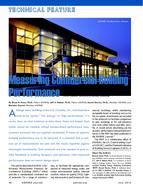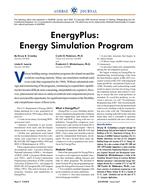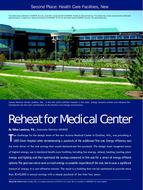Click here to purchase
According to the U.S. Energy Information Administration (EIA), in 2017, about 39%, about 38 Quads, of USA total energy consumption was consumed by the residential and commercial buildings. Some portion of that energy use has been wasted because one, or a combination of, defective building design, low-efficiency systems or their improper operation. For the cases related to the building operation, there are still questions as to how adequately evaluate building performance and how to identify potential energy saving. This paper deals with the determination of potential building energy saving only from re-heat operation using the measured monthly energy consumption data. The study focuses on systems analysis operation of hot and humid climates conditions, where during summers the outside air temperature monthly average could beas high as around 80.0°F (26.7°C). Under these weather conditions, it is expected the heating/reheat loads during summer would usually be small for most buildings, except for buildings that need large ventilation or special cleanliness/safety requirements, such as health care facility or laboratories.Therefore, the evaluation of the building energy savingpotential is derived from a reheat ratio, the ratio between thereheat to the cooling energy use, calculated from measured consumption data. The reheat ratio by itself is a good index of the building performance operation, but does not provide away to generalize the potential savings determination. For thispurpose, a reheat density chart is proposed that relates thethermal energy consumption to the reheat ratio. Based on the statistical analysis of the thermal energy consumption and reheat ratio data from over one hundred buildings, the reheatdensity chart is divided into four categories that clearly identifythe potential energy savings. The function of the buildings analyzed includes offices, classrooms, dining rooms, sport facilities, dorms or residence halls, and laboratories. From theapplication of this methodology it was found that, most buildings analyzed, 60%, fall in the category of buildings that operate reheat in a fair-efficient range. Approximately 15% of the buildings could have more saving potential for cooling energy use and 21% could have more saving potential for heating hot water use. Finally, it was found that five buildings have a high potential saving opportunity, from both cooling and heating energy use perspective, and should be considered to be commissioned.
Citation: 2020 Winter Conference, Orlando, FL Technical Papers
Product Details
- Published:
- 2020
- Number of Pages:
- 11
- Units of Measure:
- Dual
- File Size:
- 1 file , 1.8 MB
- Product Code(s):
- D-OR-20-015


